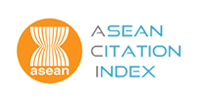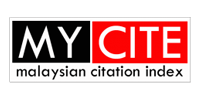Comparative simulation study of polymeric buffer layer incorporated CuI-based HTM for perovskite solar cells
DOI:
https://doi.org/10.58915/ijneam.v18i4.2616Keywords:
Numerical Simulation, Hole Transporting Material, Buffer Layer, Perovskite Solar CellAbstract
The commercial implementation of perovskite solar cells (PSCs) with inorganic hole-transporting materials (HTMs) is hindered by the requirement for more complex synthesis and processing methods. This study provides insights into the incorporation of buffer layers in copper iodide (CuI)-based perovskite solar cells through comparative simulation work. The result shows that the poly-TPD buffer layer outperforms other buffer layers, such as PMMA, P3HT, PTAA, and spiro-OMeTAD, achieving an open-circuit voltage (Voc) of 1.2687 V, short-circuit current density (Jsc) of 24.4410 mA/cm², fill factor (FF) of 83.8048%, and power conversion efficiency (PCE) of 25.9855%, which is comparable to the performance of a device without a buffer layer. This superiority is mainly attributed to the compatibility of the energy level alignment. In addition, the ability of the buffer layer materials to dissolve in solvents without negatively impacting the crystalline properties of the perovskite layer opens up possibilities for fabricating solution-processed PSCs with inorganic HTMs. The research highlights the significance of electron affinity, band gap, hole mobility, and interface defect density of the buffer layer material in determining device performance. Furthermore, it was observed that the improvements brought about by optimizing these factors individually reached a saturation point. Therefore, a holistic approach that considers the interplay between these factors is necessary to further enhance device performance in PSCs.
Downloads
Published
How to Cite
Issue
Section
License
Copyright (c) 2025 International Journal of Nanoelectronics and Materials (IJNeaM)

This work is licensed under a Creative Commons Attribution-NonCommercial-ShareAlike 4.0 International License.

















